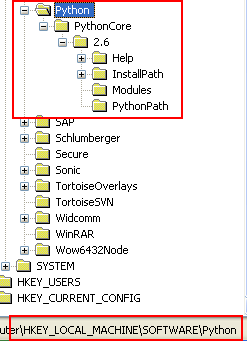I spent hours this afternoon trying to find a straightforward tutorial for installing PyCairo on Windows.
Feb 1, 2017 - Windows. You can install one of these (cp35 or cp36, depending on which version of Python you have). Home Arch Linux Remote. For other backends you may need to install pycairo, PyQt4, PyQt5, PySide. The Windows wheels ( *.whl ) on the PyPI download page do not contain test data.
The Cairo project itself does not maintain Windows binaries, they must be dowloaded elsehere (e.g. http://ftp.gnome.org/pub/GNOME/binaries/win32/pycairo/).
The process is also complicated further apparently by the fact that MSVC is apparently not a supported compiler for PyCairo (although the source patch is simple). See this bug report:
Can anyone recommend a tutorial for installing PyCairo on Windows?
6 Answers
You should try windows binary installers from Gohlke repository for pyCairo and py2Cairo.
I never used pyCairo myself but took 4 minutes to install and get my first png example file done.
Adding the following for completeness - joaquin's answer above provides a simpler route (and Python 3 support).

Please see the following tutorial:
(also hosted at http://hal.elte.hu/~nepusz/development/igraph/tutorial/install.html).
Install Pycairo
I asked the question above, so that I could answer it myself. Hopefully people in a similar situation in future will find this post :)
While Googling 'pycairo install windows' does give the above link, it is presented below some rather unhelpful pages, and it's also not particularly obvious that igraph documentation will be applicable.
Eventually I got as far as installing PyCairo (from the GNOME link in the question), without Cairo itself. This gave me a DLL import error when I tried to use it. Fortunately, a question relating to this error exists on StackOverflow:
This question discusses the excellent tutorial from Tamas, linked above, which is all I needed to get up and running.
I believe I have installed a copy using the pygtk all-in-one installer and I believe it did Just Work (32b, python2, mind you). They also mention the gnome URL in your post.
install pygtk all in onehttp://www.pygtk.org/downloads.htmlIt includes pygtk and all its dependencies, including pycairo
A simple tutorial:http://digitalpbk.blogspot.com.au/2012/03/installing-pygtk-pypango-and-pycairo-on.html
only 4 steps and worked like a charm.
There is another similar question in StackOverflow: PyCairo - installation on Windows
The accepted answer is simple and practical.
Pycairo Install
Although the link it provided is outdated (because the version is up now), the idea is great.
I improve that answer to make it more general:
Go to Unofficial Windows Binaries for Python Extension Packages - Pycairo
Download the
pycairo‑***.whlfile (choose a proper version for your environment).Go to the folder where you download the
.whlfile and typepip install pycairo-***.whl. Wait a few seconds and everything would be done.
I have tested this method and it works perfectly.
Not the answer you're looking for? Browse other questions tagged pythonwindowsinstallationcairopycairo or ask your own question.
Installing secp256k1 on windows
Edit: Resolved. New guide reflects changes. Thanks waxwing! https://github.com/JoinMarket-Org/joinmarket/wiki/Installing-JoinMarket-on-Windows
I am having some trouble getting secp256k1 to work with joinmarket on windows 10. I did the pip install secp256k1-transient as it says in the guide and it appears to install correctly. When I run wallet-tools.py, it says that I'm not using the binding to libsecp256k1. I should be able to run secp256k1 in command prompt with python right? When I try, python -m secp256k1 I get this traceback:
It's my impression that pip install should correctly setup libsecp256k1 but I am not seeing it anywhere on my computer. It seems to me that pip isn't correctly installing libsecp256k1. Not sure what I'm doing wrong. I appreciate any help. Thanks!